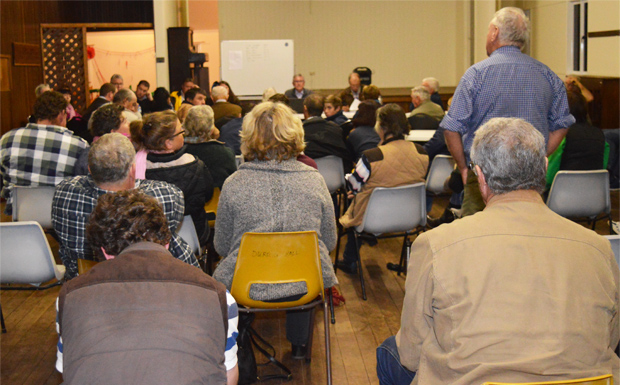
July 13, 2018
All the South Burnett’s dirt roads will “see a grader” within 12 to 18 months, about 65 angry ratepayers were promised at a public meeting held at Durong Hall on Thursday night.
The meeting, which South Burnett councillors were invited to attend, following a preliminary gathering at the hall on Saturday night organised by local farmers who were shocked to learn their rates were about to rise steeply.
Annual rises of up to 17.5 per cent were quoted from the floor, compared with the 5 to 6 per cent figure for farmers given to the media by Council on Budget day (June 25).
South Burnett Mayor Keith Campbell was accompanied to the meeting by Deputy Mayor Kathy Duff and councillors Ros Heit, Roz Frohloff, Gavin Jones and Danita Potter. Cr Terry Fleischfresser was an apology.
Also in attendance were the Council’s General Manager Finance, Lester Schumacher, and recently appointed General Manager Infrastructure, Aaron Meehan.
Residents were angry they had no forewarning about a steep rate increase and no prior consultation or explanation, something which local resident Lorna Wieland said was not “best practice” according to Department of Local Government guidelines:
“Any significant increases in rates should be reasonable and attributed to transparent changes to either the services or facilities provided to land or to changed circumstances of the land. The department considers it best practice for local governments proposing significant increases in rates to inform and consult with ratepayers before the rates notices are issued.”
[Ref. Guideline on equity and fairness in rating for Queensland local governments (267kb PDF) ]
They also expressed concerns the extra money raised from the rates hike could disappear into Council’s coffers for other projects – such as the proposed Kingaroy CBD beautification scheme – rather than be spent on rural roads.
Mayor Campbell attempted to hose down concerns the rural ratepayers were being “discriminated against” in the Council Budget.
He said there were 2293 rural primary producers in the South Burnett, who paid about $6.6 million in rates.
It comparison, there were about 14,000 ratepayers in the towns and villages who paid about $21-22 million.
“The road levy was introduced to get the roads back into some level of semblance of order after the 2012 floods,” he said.
“And probably in reality, the roads weren’t up to scratch even at that point in time.
“Under the old scheme that was prevailing, rural producers were contributing around about $460,000 towards the road levy.
“Urban and village ratepayers were contributing about $2.9 million to the road levy.”
He said about 84 per cent of the roads the SBRC looked after were rural roads, and a large proportion of those were dirt.
“The other 16 per cent are tied up in towns and villages,” he said.
He said now the road levy had been rolled into general rates, it was valuation-based rather than a fixed $200-per-year.
Mayor Campbell said under this arrangement, Council would collect about an extra $700,000 for roads, but not all of that would come from rural ratepayers.
He supplied some half-yearly figures:
- 8000 ratepayers would be paying up to an extra $20
- 2600 ratepayers would be paying up to an extra $50
- 1411 ratepayers would be paying up to an extra $111
- 1045 ratepayers would be paying up to an extra $250
- 242 ratepayers would be paying up to an extra $500
- 78 ratepayers would be paying up to an extra $1000
- 28 ratepayers would be paying more than an extra $1000
General Manager Finance Lester Schumacher told the meeting the extra money would be kept separate “in the books” so it would only be spent on roads, and would be reported to Council.
An audience member, Tony, described the way Council had “removed the road levy from sight” as a sleight of hand that was “insidious … low, crafty and underhanded”.
He said he used to have his road graded twice a year under the old Wondai Council, without any road levy, but in the past four years he had seen “absolutely zero improvement to the overall condition of rural roads” in his area.
“These roads are maintained at a significantly lesser frequency and to a lower standard than they were pre-amalgamation therefore the question has to be asked, where has the money been spent?”
Roads portfolio holder Cr Gavin Jones and General Manager Infrastructure Aaron Meehan explained that Council was about to begin a three-year gravel re-sheeting program.
Cr Jones said the whole region had problems with roads, and the problem couldn’t be fixed overnight.
“I think I’m safe in saying that in the next 12 to 18 months, every road in our region should have a grader over it at some stage, whether it’s a dry grade, a maintenance grade or whatever,” he said.
“We will do double re-sheeting on the high priority roads – roads which carry 500, 300 cars. When we’ve got roads that take five cars a day, obviously you don’t expect us to go out in a fix that five cars a day (road) over the 300 to 400 cars.
“We’ve got a priority. We’ve got a system in place.
“We’ll gravel re-sheet all the heavy traffic roads.”
He said the grader would still get out to the lesser-trafficked roads but the level of service would be a dry grade or a maintenance grade.
[UPDATED with correction. This report originally stated there were 3000km of unsealed roads, however this is the size of the South Burnett’s whole road network. Gravel roads make up about 1600km of the South Burnett’s road network.]
* * *
Meeting chairman Greg Wieland invited people interested in forming a ratepayers’ association to see him after the meeting.
No formal association has been established yet, but southburnett.com.au understands several people have contacted Greg to express interest.
* * *
Due to residents’ interest, southburnett.com.au recorded the public meeting:
* * *
Several references were made during the meeting to an interview with Mayor Keith Campbell by breakfast announcer Brittany on Radio 4SB on June 26:
* * *
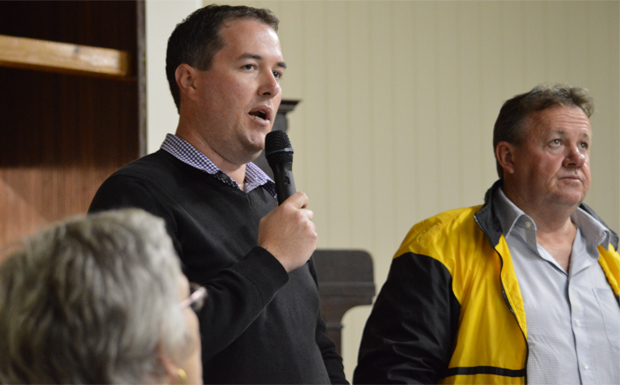
 |
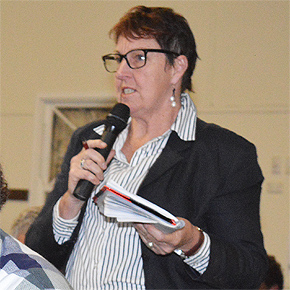 |
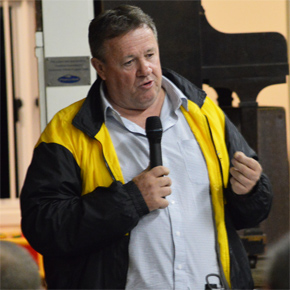 |
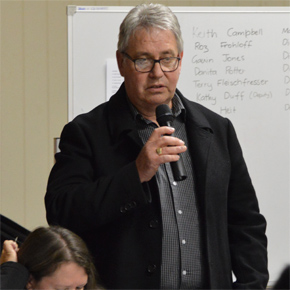 |
























Just make everyone’s rates the same. Overweight people put more strain on the health system but they aren’t taxed more because of it! I am sure people who live in town make more use or put greater demand on other public assets that rural rate payers do not. This is a dangerous road to go down and one that can only be attempted if council are ready to address all services offered by council and where and whom is using them.
I live on a road that runs parallel with the highway, it hasn’t been graded for over 7 years, even after numerous requests to Council. Graders etc drive straight past on the highway every time they do roadworks out here. It wouldn’t take long to do a run through as they’re passing.
Well now the Council has a “spare” $3 million they won’t be spending on the CBD in Kingaroy this year, so they can spend it on these roads ….. problem solved!